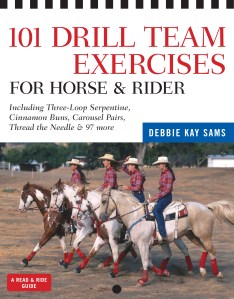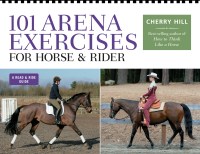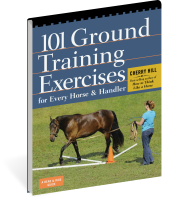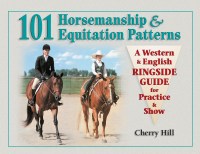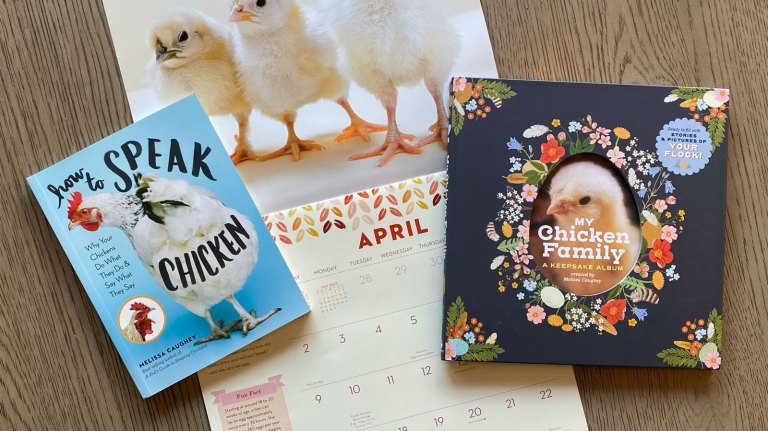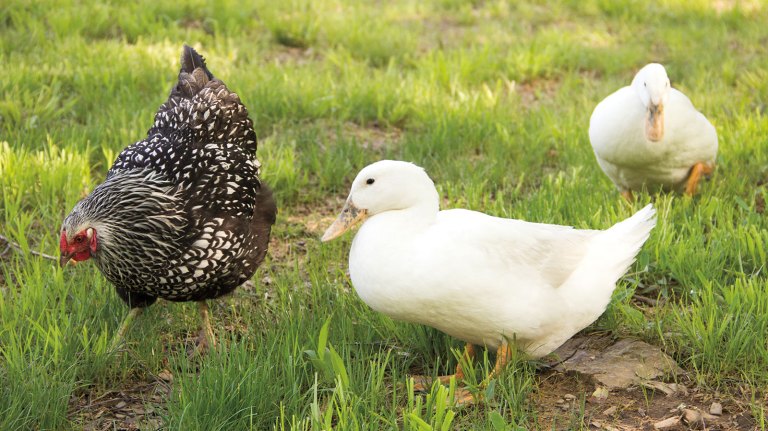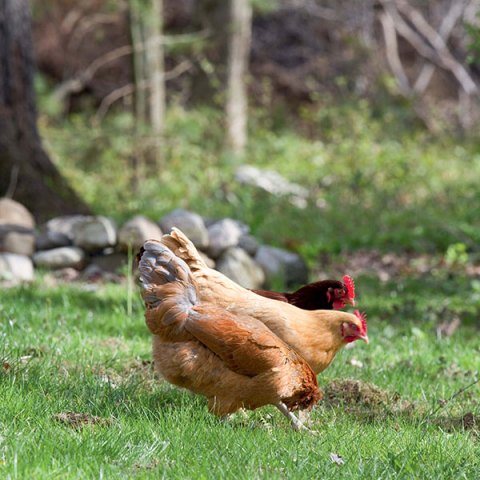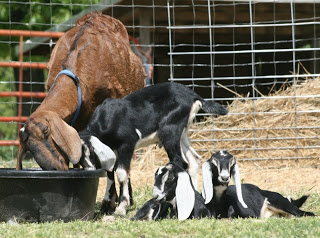Toes and Knees Turned Out: Horserider’s Problems and Solutions
A featured entry in the “Deep Seats” series
Problem
Many people naturally toe out when they walk. Therefore, it is only natural for them to turn their toes out when riding (Illus. 24); it feels more comfortable that way. A little bit of toeing out is acceptable and even desired. There are several problems with extreme toeing out, though.
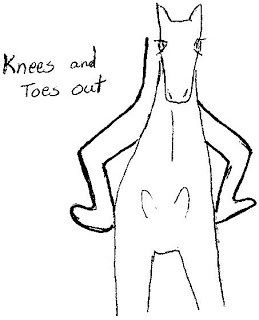
Problem: Knees and toes out
- The extreme toe-and-knee-out position causes seat tension.
- Toes that point out too much are more likely to get caught on trees and other objects.
- When the rider is riding with toes and knees out, her thighs are resting on the flabby back side of the leg, giving the rider less security.
There are circumstances that warrant turning the toe out to a degree, such as in hunter-jumper and cross-country riding, where the stirrup must be short. A person’s natural conformation will often make some toeing out necessary. Even in these cases, though, the inner thigh and knee must be flat against the horse’s side.
Solution
Roll thighs — Roll your thighs (Illus. 25), one at a time, and move them back beyond normal position (Illus. 26).
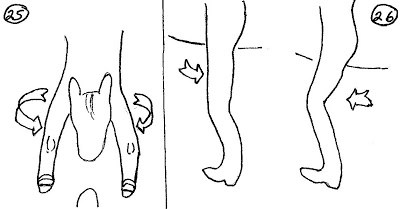
Solution: Roll thighs
Illus. 26
Solution: Move behind normal position, then slide forward
Then rest your thigh on the horse’s side, and pull the flabby portion of the thigh behind your leg (Illus. 27). After that, slide the leg forward into normal position with a very deep knee. Next, tuck your seat deep into the saddle using the exercise seen in Illus. 10 (below). Even those who appear to have no flab at all do have some muscle and padding on the back of the leg. This exercise is for everyone. If you experience cramping, stop immediately, and relax before continuing. This exercise will provide you with a very connected leg and seat.
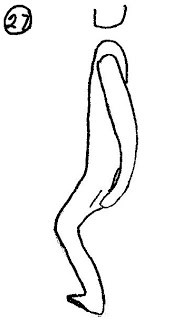
Solution: Move flab/muscle behind leg
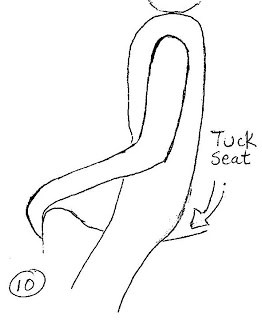
Solution: Tuck Seat
Tension vs. relaxation — This ground exercise will help you see what happens to your body when you turn your toes out.
The Drum(Illus. 28 and 29)
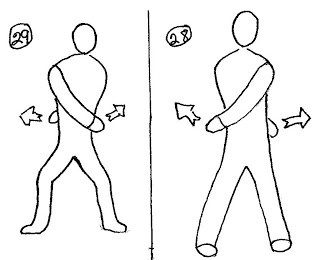
Illus. 29
Toes out = seat tensionIllus. 28
Toes straight = relaxed seat
- Stand with toes pointing straight ahead and feet apart as in riding position.
- Pull the belly button in slightly.
- Lower the tailbone a bit.
- Making the hands into a fist, swing your arms loosely side to side, allowing them to hit your body.
- Now try it with the toes out, and note the tightness in your seat (Illus. 28). This is why it is so important to have the flat side of the thighs on the horse and the toes almost straight ahead, especially in dressage and Western riding, where you need a deep flexible seat to truly move with the horse.
Learn More
Build teamwork and good horsemanship as you work through these fun and rewarding exercises. With clearly drawn arena diagrams and step-by-step instructions for each exercise, your team will become a cohesive unit as you progress from basic skill-building drills to fun and challenging synchronized formations. Debbie Kay Sams even includes 10 complete performance routines with choreography that incorporates the skills and exercises you’ve mastered. Get ready to dazzle the crowd at your next event!
